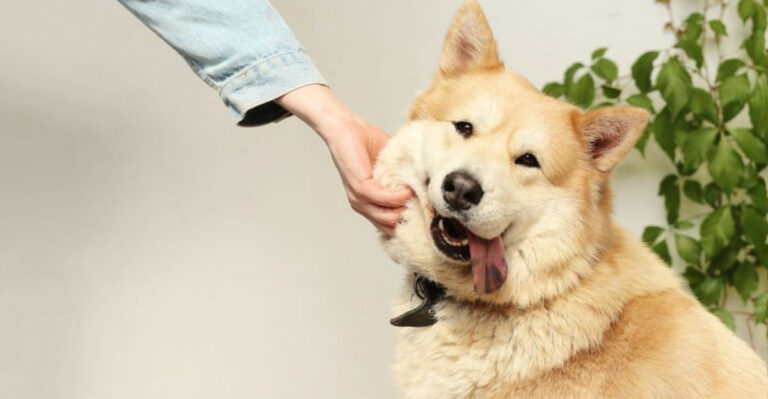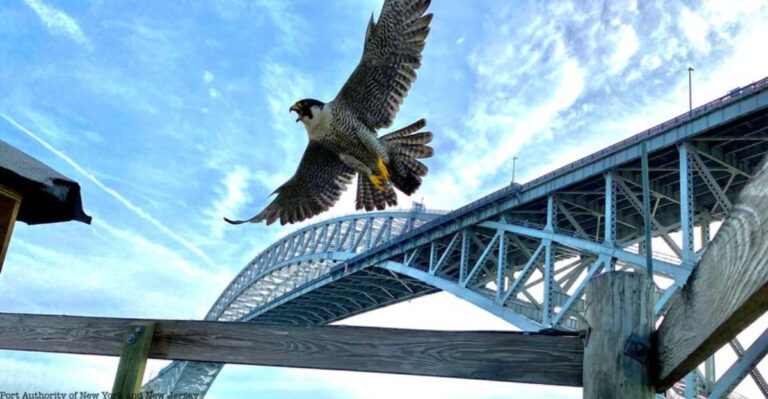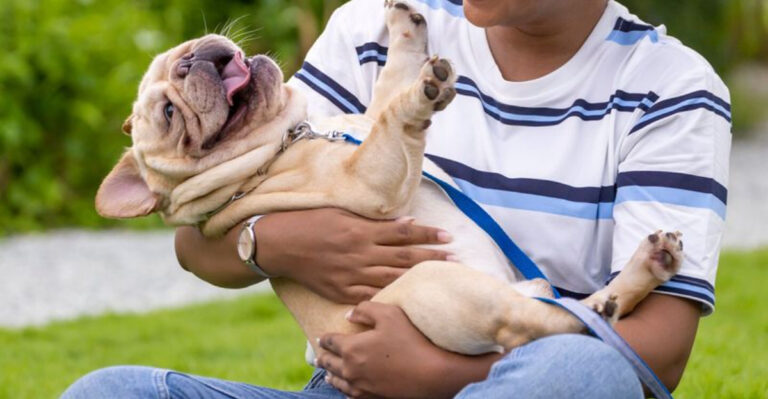15 Emotional Ways Dogs Mourn When Their Owners Pass Away

The bond between dogs and their humans runs soul-deep, creating connections that transcend ordinary pet relationships. When that bond is severed by death, our canine companions experience genuine grief that manifests in surprisingly human-like ways.
These loyal friends process loss through behavioral changes that reveal just how deeply they understand the concept of absence.
1. Waiting By The Door

Hours blend into days as faithful companions station themselves by entryways, ears perking at every footstep outside. Their unwavering vigil speaks volumes about hope and memory.
Some dogs maintain this heartbreaking routine for weeks, occasionally racing to windows when hearing sounds similar to their owner’s car or voice. This door-watching ritual represents their purest form of loyalty and expectation.
2. Loss Of Appetite

Food bowls sit untouched while grief steals away hunger. The once-exciting mealtime ritual becomes meaningless when their favorite human isn’t there to share it.
Even treats that previously caused tail-wagging excitement might be ignored or taken reluctantly. This hunger strike isn’t manipulation but genuine emotional distress manifesting physically, similar to how humans lose appetite during periods of intense grief.
3. Searching The Home

Restless pacing creates worn paths through the house as four-legged detectives investigate every corner. Their noses work overtime, tracking scent trails that grow fainter with each passing day.
Room-to-room searches happen most frequently during times when routines were once shared – morning wake-ups or evening relaxation hours. This behavior shows their understanding that someone important is missing and their determination to solve this painful mystery.
4. Sleeping On Owner’s Clothing

Scent becomes precious currency in grief’s economy. Dogs will unearth clothing from hampers or closets, creating nests from garments that smell most strongly of their missing person.
Watch how they’ll curl protectively around these fabric treasures, nose pressed deep into the material. The comfort derived from these scent-memories helps bridge the confusing gap between presence and absence, providing temporary relief from their sorrow.
5. Whimpering At Night

Darkness amplifies loneliness, bringing soft, heartbreaking cries that pierce the night’s quiet. These aren’t typical attention-seeking whines but something more profound – a vocalization of inner pain.
The timing isn’t coincidental. Bedtime routines were once shared moments of closeness and security. Without their person, nighttime becomes a stark reminder of absence, and these sounds represent the vocalization of an emotion too complex for words.
6. Refusing To Leave The Gravesite
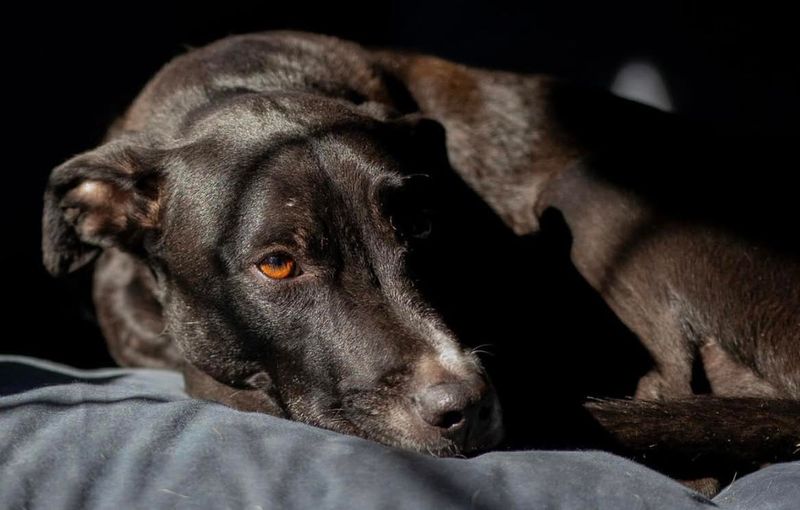
Cemetery soil holds no meaning for humans alone. Dogs who attend funerals sometimes display remarkable understanding of the significance of these sacred grounds.
Stories abound of loyal companions who resist leaving their owner’s final resting place, sometimes needing to be physically removed. This profound behavior suggests dogs comprehend more about death’s permanence than we typically credit them with understanding.
7. Clinging To Remaining Family

Suddenly, shadows replace independence as grieving dogs develop velcro-like attachments to surviving household members. Bathroom breaks become group activities; solo ventures become impossible.
This clingy behavior stems from fear of additional loss. Having experienced one disappearance, they’re determined not to let it happen again. Their newfound neediness isn’t regression but a coping mechanism – forming stronger bonds with those still present helps heal the void left behind.
8. Carrying Owner’s Possessions

Remote controls, shoes, reading glasses – ordinary objects transform into precious relics carried gently between careful teeth. These items, once mundane, become sacred treasures to be protected.
You’ll notice how these objects aren’t treated like typical toys. Instead of chewing, dogs will arrange them in sleeping areas or simply hold them. This behavior represents an attempt to preserve connections through tangible items that still hold their person’s scent and energy.
9. Decreased Playfulness

Tennis balls gather dust while favorite toys lie forgotten in corners. The spark that once ignited play drive dims considerably during mourning periods.
Games that once brought boundless joy now seem pointless without their special playmate. This joy-deficit isn’t simply sadness but represents a fundamental shift in their world’s emotional landscape. Play requires a sense of security and happiness that grief temporarily steals away.
10. Returning To Favorite Shared Spots

Park benches, specific hiking trails, or that special corner of the couch become pilgrimage sites. Dogs will repeatedly visit locations strongly associated with happy memories shared with their person.
Watch how they’ll pause in these spots, sometimes sitting quietly or looking around expectantly. These location-based memories demonstrate sophisticated emotional geography – their brains have mapped joy to specific places, and they’re seeking to reconnect with those feelings during their grief journey.
11. Responding To Owner’s Name

Simple conversations become emotional minefields when certain names are mentioned. Ears perk instantly, heads swivel hopefully, and tails momentarily flicker with expectation.
This name recognition persists long after loss, showing how deeply language connects to their understanding of specific people. The brief excitement followed by visible disappointment reveals their cognitive processing of absence – they understand the name should summon the person, and are confused when reality doesn’t match expectation.
12. Changes In Sleep Patterns

Restless nights replace peaceful slumber as grief disrupts normal sleep cycles. Some dogs barely close their eyes; others sleep excessively, using unconsciousness as temporary escape.
You might notice them startling awake frequently, as if checking whether their person has returned. These sleep disturbances mirror human grief responses, highlighting the physiological impact of emotional distress.
13. Howling Or Unusual Vocalizations
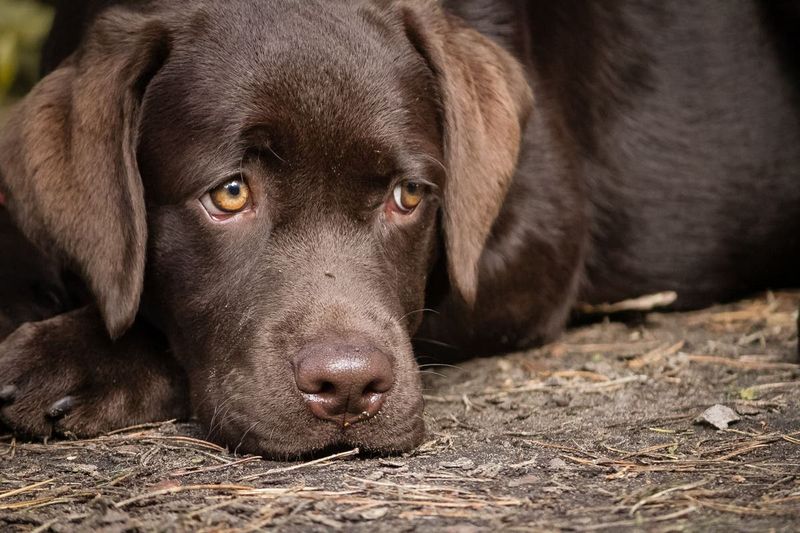
Ancient wolf ancestry emerges through mournful howls that send chills down spines. Even typically quiet breeds may find their voice during grief’s darkest moments.
These sounds differ distinctly from barks or whines used for attention or alerts. Instead, they carry a haunting, soulful quality that seems to express something primal. Some behaviorists believe these vocalizations serve as emotional release valves – the canine equivalent of crying.
14. Refusing New Handlers

Loyalty extends beyond death as some grieving dogs reject new caretakers, regardless of their kindness or good intentions. This isn’t stubbornness but devotion in its purest form.
Well-meaning relatives or friends may struggle to feed, walk or comfort these devoted mourners. This behavior represents the depth of their bond – they aren’t simply missing a food provider but grieving an irreplaceable relationship. Time and patience become essential as they slowly open their hearts to new connections.
15. Physical Symptoms Of Grief

Grief lives in bodies, not just hearts. Fur may shed excessively while digestive systems rebel through unexpected accidents or stomach upsets unrelated to diet changes.
Some dogs develop visible tremors or show decreased immune function, becoming more susceptible to minor illnesses. These physical manifestations aren’t psychosomatic but real physiological responses to stress hormones flooding their systems.

